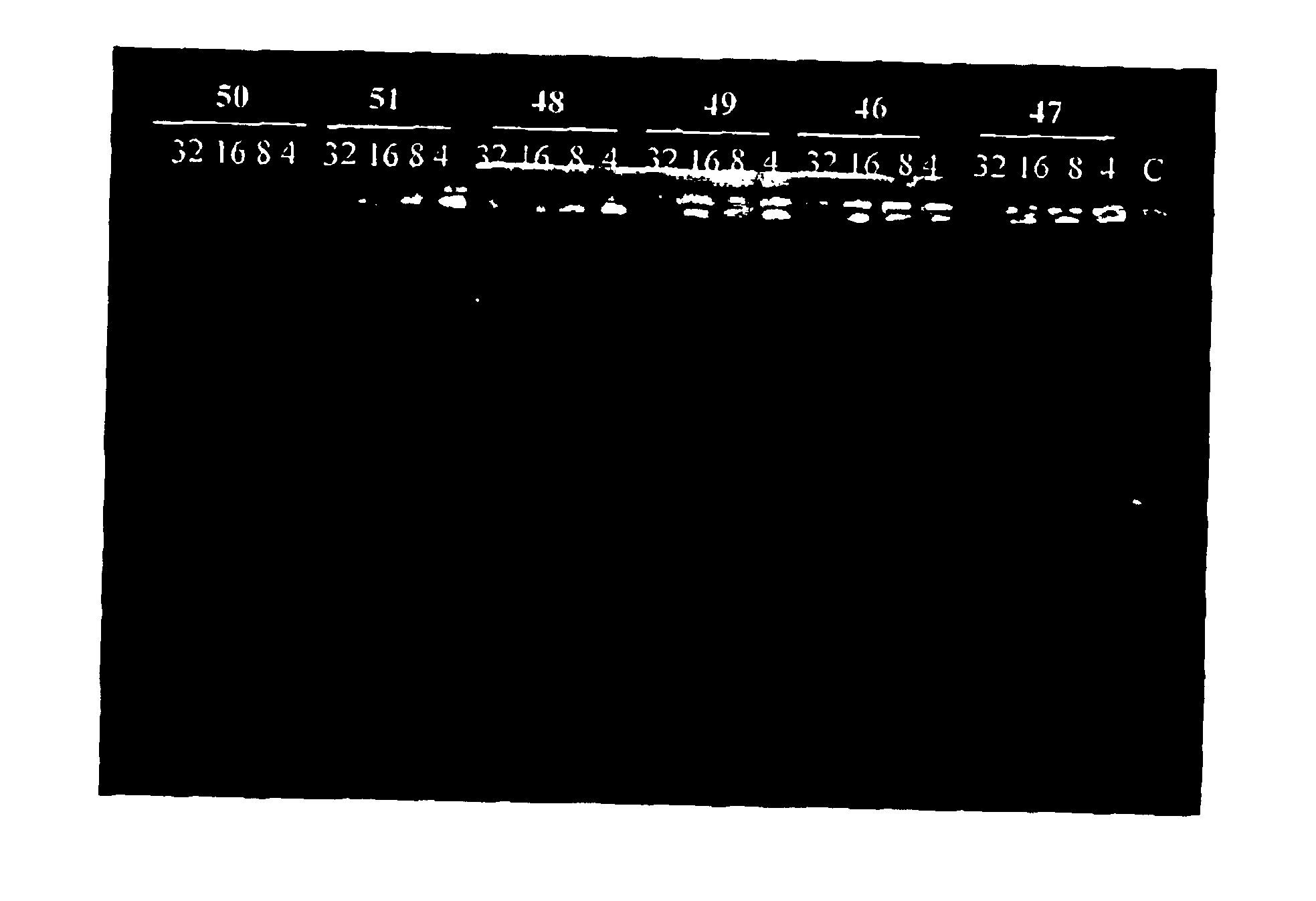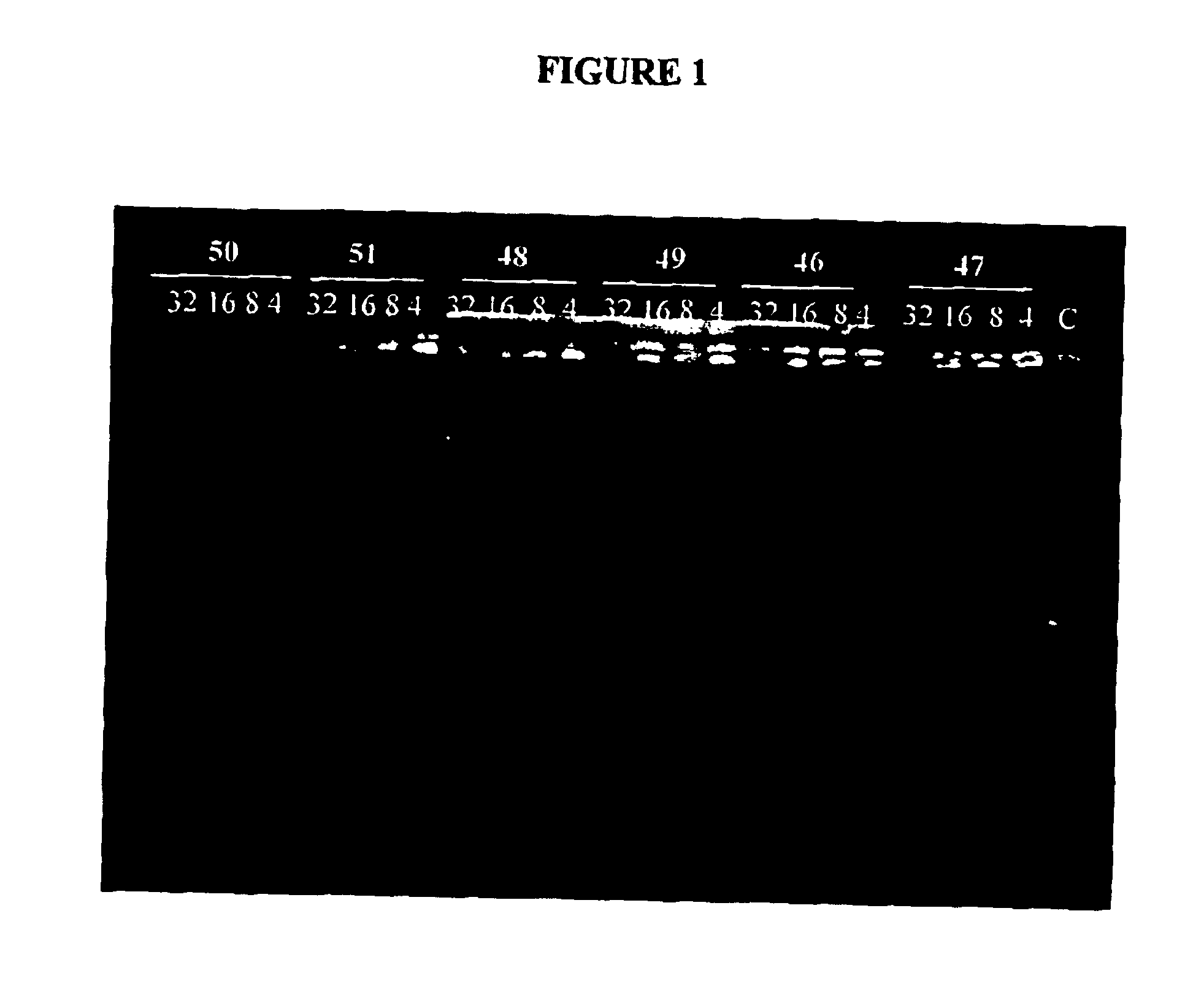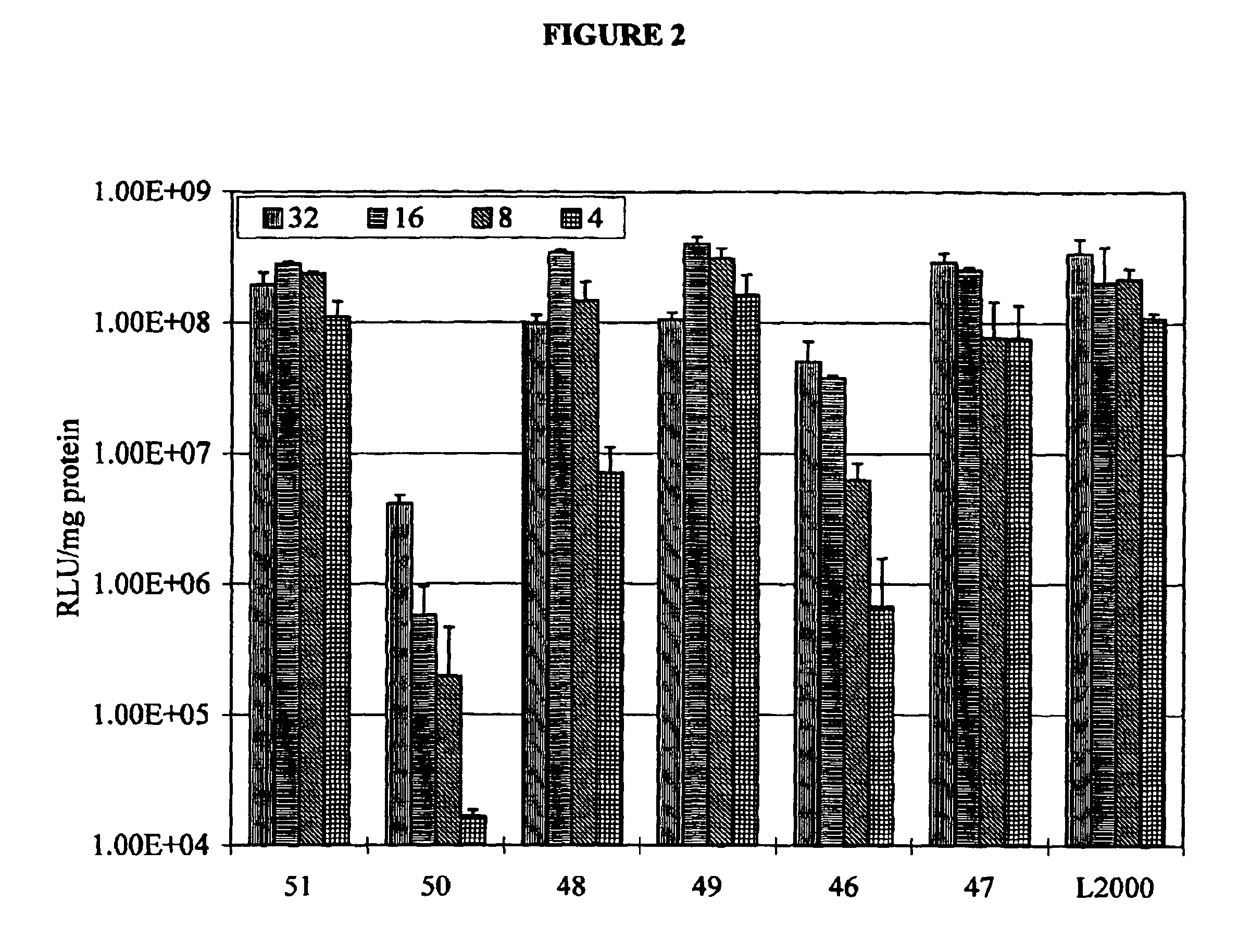Acid-sensitive polyacetals and methods
a biodegradable, acid-sensitive technology, applied in the direction of amine active ingredients, amide active ingredients, peptides, etc., can solve the problems of non-degradable cationic polymers such as poly(lysine) and polyethyleneimine (pei) can have significant cytotoxicity, and cationic polymers are susceptible to degradation
- Summary
- Abstract
- Description
- Claims
- Application Information
AI Technical Summary
Benefits of technology
Problems solved by technology
Method used
Image
Examples
examples
[0067]Cell lines and cultures used in the following examples were prepared as follows: Human embryonic kidney cells (“293 cells”) were grown in Dulbecco's-modified Eagle's medium (DMEM) containing 10% (v / v) heat-inactivated fetal bovine serum (FBS), 100 U / ml Penicillin and 100 μg / ml streptomycin, and incubated at 37° C. at 100% humidity atmosphere containing 7.5% CO2.
[0068]GFP plasmids used in the following examples were prepared as follows: Plasmid pCMV-GFP was purchased from Clontech (Palo Alto, Calif.). The expression of green fluorescent protein (GFP) cDNA is controlled by human cytomegalovirus (CMV) promoter and the transcripts are stabilized by a gene expression enhancer, chicken β-globulin intron. The plasmid vector pCMV-luc was constructed by cloning the firefly luciferase gene into pCMV-0, with the same backbone of mammalian expression vector. The plasmid was expanded in DH5α E. coli and purified with a Plasmid Maxi Kit (obtained commercially from Qiagen, Valencia, Calif.) ...
examples 1-8
[0070]Protected monomers 6-13 were prepared according to the reaction scheme shown in FIG. 7. The following description for the synthesis of protected monomer 7 is illustrative: Di(ethylene glycol) divinyl ether (1.62 g, 10.3 mmol) and protected serine methyl ester 1 (7.00 g, 20.5 mmol) were stirred in tetrahydrofuran (THF) in the presence of molecular sieves (5.00 g) at room temperature for 20 min. A catalytic amount of toluenesulfonic acid (TSA, 0.20 g, 1.0 mmol) was added into the mixture and stirring was continued for 1 day. The reaction mixture was quenched with saturated sodium carbonate in water (30 mL). The organic phase was extracted with ethyl acetate (2×50 mL). The extracts were combined, dried with sodium sulfate, filtered, and concentrated by rotary evaporation. The residue was placed under high vacuum to give protected monomer 7 (8.0 g, 9.51 mmol, 97%) as an oil.
examples 9-16
[0071]Monomers 14-21 were prepared by de-protection of protected monomers 6-13, respectively, according to the reaction scheme shown in FIG. 8. The following description for the synthesis of monomer 16 is illustrative: A solution (5 mL) of 20% piperidine in THF was added into protected monomer 8 (1.0 g, 1.2 mmol). The mixture was stirred for 2 hours. The reaction mixture was added with hexane (15 mL) and oily precipitate formed. The oily residue was obtained by decanting the solution and redissolved with dichloromethane (DCM, 5 mL) and stirred for 5 hours. Water (5 mL) was added into the mixture and the organic phase was extracted with DCM (2×10 mL). The extracts were combined, dried with sodium sulfate, filtered, and concentrated by rotary evaporation. The residue was placed under high vacuum to give monomer 16 (0.30 g, 0.75 mmol, 63%) as an oil.
PUM
| Property | Measurement | Unit |
|---|---|---|
| molecular weight | aaaaa | aaaaa |
| molecular weight | aaaaa | aaaaa |
| Molecular weights | aaaaa | aaaaa |
Abstract
Description
Claims
Application Information
 Login to View More
Login to View More - R&D
- Intellectual Property
- Life Sciences
- Materials
- Tech Scout
- Unparalleled Data Quality
- Higher Quality Content
- 60% Fewer Hallucinations
Browse by: Latest US Patents, China's latest patents, Technical Efficacy Thesaurus, Application Domain, Technology Topic, Popular Technical Reports.
© 2025 PatSnap. All rights reserved.Legal|Privacy policy|Modern Slavery Act Transparency Statement|Sitemap|About US| Contact US: help@patsnap.com



